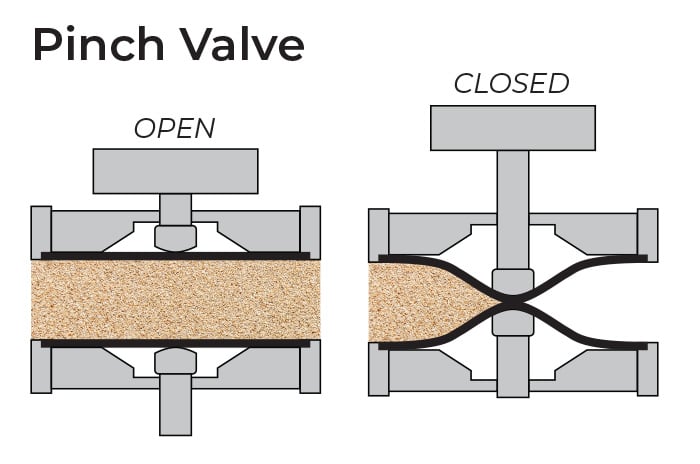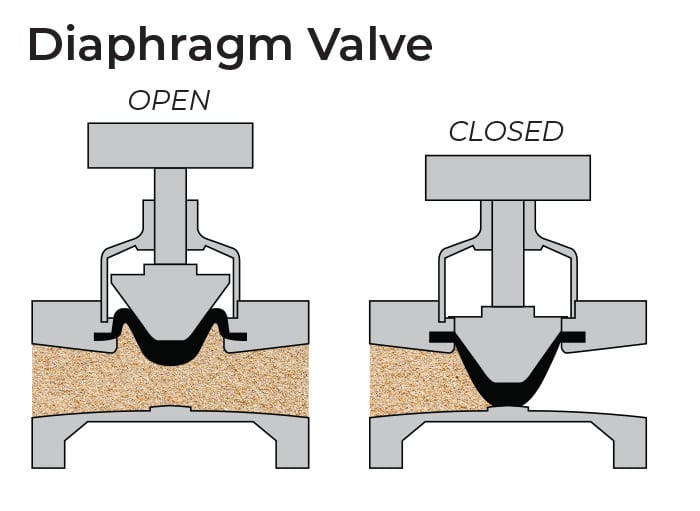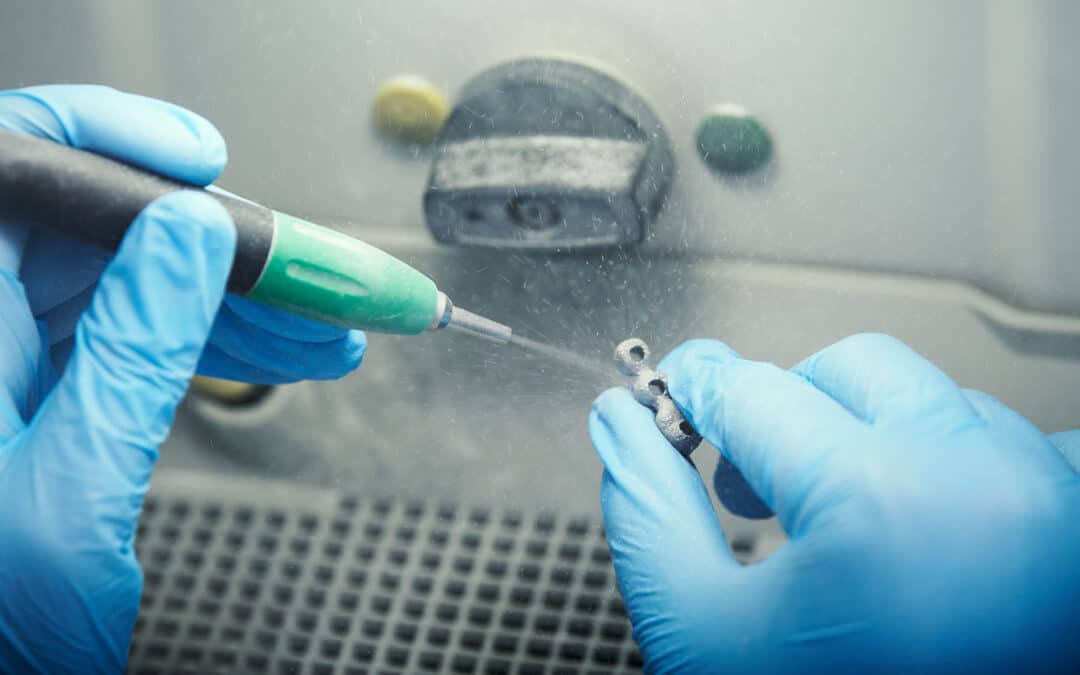When it comes to wet abrasive blasting equipment, the type of valve used can significantly impact performance, efficiency, and overall user experience. Two common control valve options in this context are pinch valves and diaphragm valves. In this article, we’ll explore the differences between these valves, their functionality, and their implications for wet abrasive blasting applications.

Pinch Valves: Squeezing the Flow
Pinch valves operate by pinching or squeezing a flexible tube or sleeve to control the flow of fluid or material. When the valve is open, the tube remains uncompressed, allowing the substance to flow through. Conversely, closing the valve involves pinching off the tube, effectively stopping the flow. Pinch valves are often preferred in scenarios where abrasive or corrosive materials are being handled. The flexible tube provides adequate resilience against wear and damage, making pinch valves suitable for such challenging applications.

Diaphragm Valves: Precision & Reliability
Diaphragm valves, on the other hand, utilize a flexible diaphragm to regulate fluid or material flow. The diaphragm acts as a barrier between the flow path and the valve body. Opening the valve lifts the diaphragm away from the flow path, enabling the substance to pass through. Closing the valve causes the diaphragm to seal against the valve body, effectively stopping the flow. Diaphragm valves are often preferred in situations that require precise control. The diaphragm provides a tight and reliable seal, ensuring accurate flow regulation and minimizing the risk of contamination. They also are offered in a “fail close” configuration making them optimal for such applications where equipment misuse or improper shutdowns can lead to problematic outcomes.
Choosing the Right Valve for Wet Abrasive Blasting Equipment:
When it comes to wet abrasive blasting equipment, selecting the appropriate control valve is crucial for optimal performance and efficiency. While pinch valves generally come at a lower cost, they may be more susceptible to wear and require frequent maintenance due to the repeated pinching action. On the other hand, diaphragm valves, despite their higher price point, offer better control, increased reliability, and improved longevity. These qualities make diaphragm valves the preferred choice for abrasive blasting applications, where precision, durability, and efficient operation are paramount.
Factors to Consider:
Several factors should be considered when choosing between pinch valves and diaphragm valves for abrasive blasting equipment:
- Type of Abrasive Media: Different media may have varying levels of abrasiveness, which can impact the valve’s durability and lifespan. For example, if you plan on using XXX then a pinch valve would hold up better. Most other abrasives work well with diaphragm valves.
- Flow Control Requirements: If precise control over the flow rate and pressure is essential for your blasting application, diaphragm valves can offer another level of superior regulation capabilities.
- Maintenance Needs: Pinch valves require more frequent maintenance due to the wear associated with the pinching action. Diaphragm valves, in contrast, require less maintenance and offer longer service life.
- Overall System Efficiency: The choice of valve can influence the efficiency of the blasting system, including factors such as material consumption, energy usage, and throughput. Consider the valve’s impact on these aspects to optimize your blasting operations.
Automation for Error-Free Operation:
One notable advantage of diaphragm valves is their ability to automate the start-up and shut-down process, eliminating potential operator errors. In contrast, media shut off valves on other Wet Blast Systems rely on manual operation, which can lead to issues if the valve is not properly closed before filling the blasting equipment with media.
For systems using pinch valves, the risk of backflow issues arises when the media shut off valve is left open during the fill process, or more common, the shutdown process when the air supply is turned off to the system. This simple mistake can quickly result in media and/or contaminated water to flow freely into the control panel and pipe stream. This can lead to catastrophic failure of the pneumatics resulting in equipment damage and substantial downtime and repair cost.
Diaphragm valves, on the other hand, feature fail safe designs that ensure proper closure of the media valve, even when the air supply is turned off to the equipment. This prevents backflow issues and thereby eliminates the possibility of operator error that can quickly result in those costly repairs and downtime. Additionally, diaphragm valves have that added value of being incorporated into automated systems with relative ease without the need of additional componentry.
Enhanced Durability and Resistance to Wear & Tear:
Another significant advantage of diaphragm valves lies in their durability and resistance to wear and tear, particularly when subjected to different abrasive materials. Depending on the type of abrasive used, the pinch valve may experience accelerated wear and deterioration, leading to frequent maintenance and replacement.
In contrast, diaphragm valves are specifically designed to withstand the abrasive nature of blasting media. They feature robust construction and durable materials that can withstand the rigors of abrasive blasting, resulting in longer lifespan and reduced downtime for maintenance and repairs. This enhanced durability of diaphragm valves makes them a cost-effective choice in the long run, despite the initial higher investment.
Note: The information provided in this article is of a general nature, and specific characteristics and applications of pinch valves and diaphragm valves may vary based on the manufacturer and the context in which they are used.


